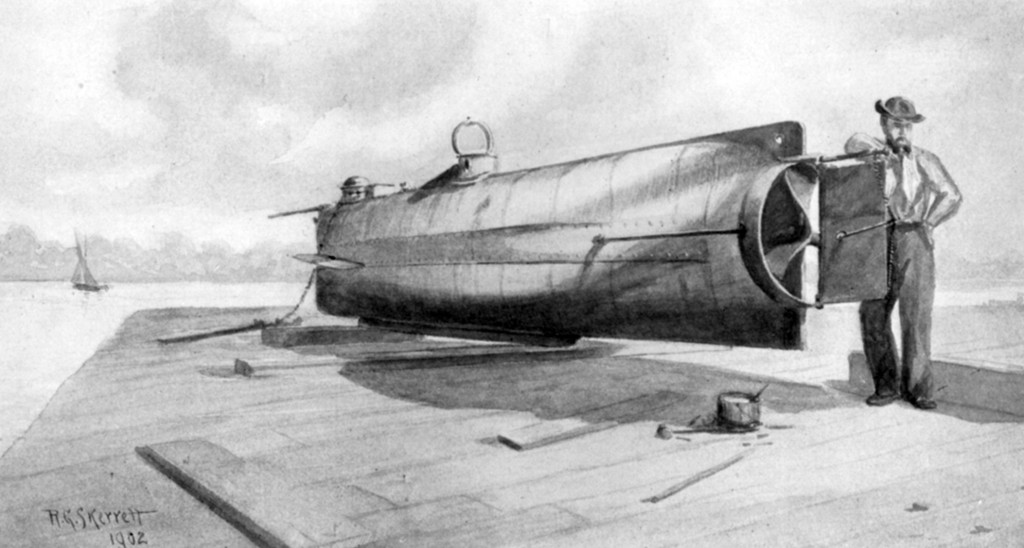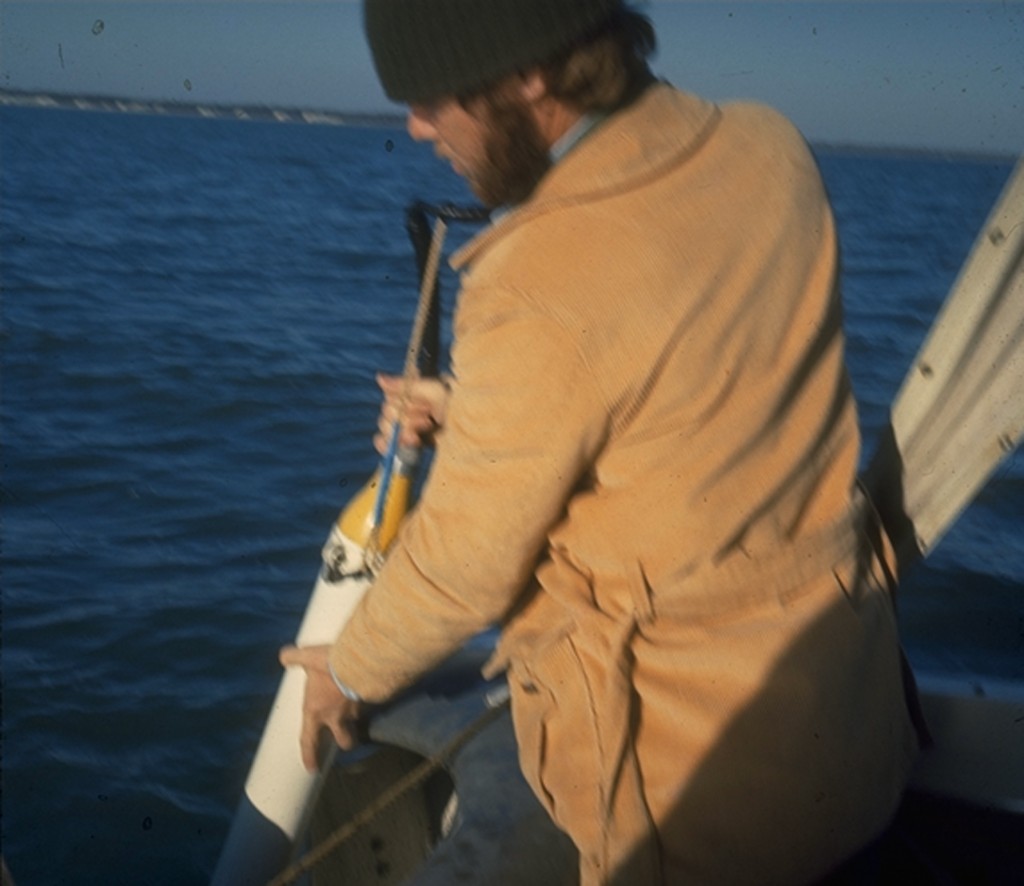THE CONFEDERATE SUBMARINE H.L. HUNLEY
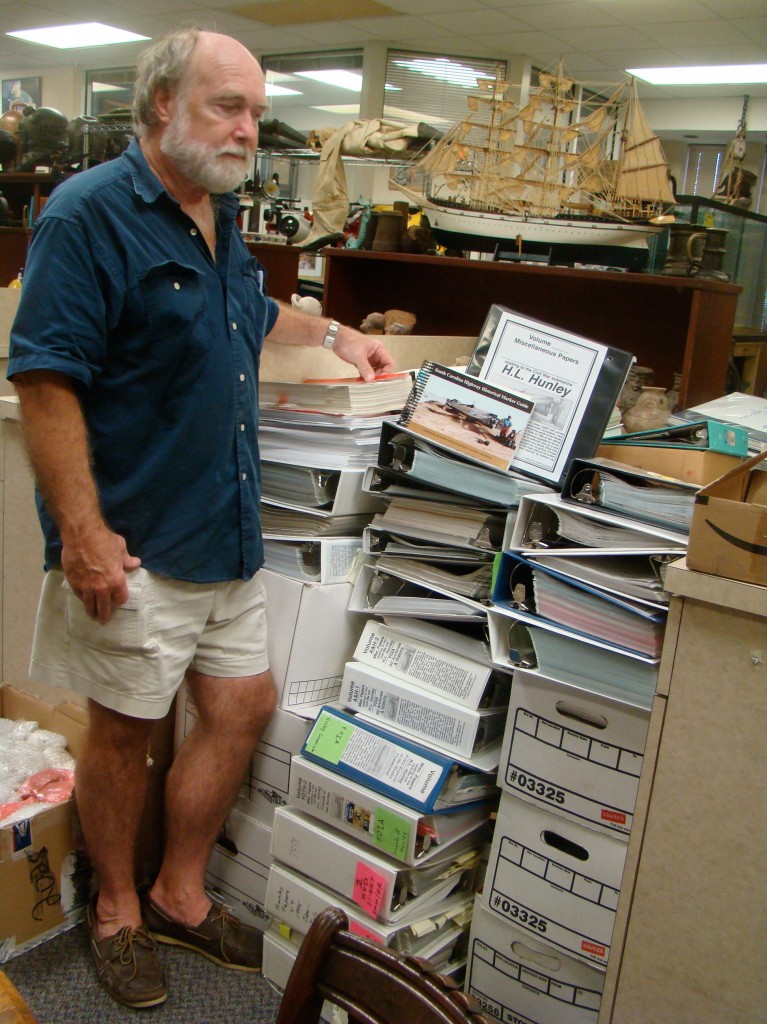
Dr. E. Lee Spence reflects on his decades long struggle for full credit for the discovery of the Hunley, as he stands next to stacks of folders and boxes of documents relating to the Hunley.
The Civil War submarine H.L. Hunley is important because it was the first submarine in the history of the entire world to sink an enemy ship. Who made the discovery is important because it has been described by government officials as the most important underwater archaeological discovery of the 20th century.
I (E. Lee Spence) discovered the wreck of the Hunley in 1970 (and I have lots of documentation to prove it).
Unfortunately, there are some others who, for reasons that they should explain, claim that fiction writer Clive Cussler and NUMA found the wreck in 1995. I don’t dispute that a SCIAA expedition, directed by Dr. Mark Newell and funded in part by NUMA and/or Cussler dug it up in 1995, but I absolutely disagree that what Cussler/NUMA did was discovery. I say they didn’t discover it because I had already published the wreck’s correct location and it was no longer lost to be discovered.
Periodically I get a question relating to my discovery of the wreck of the Confederate submarine Hunley and novelist Clive Cussler’s claims that his group (NUMA) discovered it in 1995. The question is: “Who found it first?” My answer is: “I did and, when I found it, I went swimming to surface screaming I’ve found the Hunley.”
I say that I (E. Lee Spence) discovered the Hunley in 1970 (and I have lots of documentation to prove it), while some others, for reasons I wish they would be forced to fully explain under oath in court, claim that fiction writer Clive Cussler and NUMA found the wreck in 1995.
It’s not that I dispute that during an expedition initiated and directed by Dr. Mark Newell of the South Carolina Institute of Archaeology & Anthropology (SCIAA), divers funded by NUMA and/or Cussler dug it up and took the first photos of of the wreck in 1995, I don’t. And they deserve credit for that, but I absolutely disagree that what that expedition did was discovery of the wreck. I disagree because I had already found and had published the tiny submarine’s correct location and it was no longer lost to be discovered.
Cussler’s claims that his organization NUMA discovered the Hunley in 1995 seem ridiculous to me since I discovered the wreck in 1970 and my discovery was documented and well known, even to him. I had already published the wreck’s correct location in one of my books that came out shortly before NUMA’s alleged discovery. The map was there for anyone to use. The map was in my chapter about my discovery of the Hunley and was marked with the word “it” in quotes and an arrow pointing to my “X.” The center of my “X” marked the actual location of the Hunley.
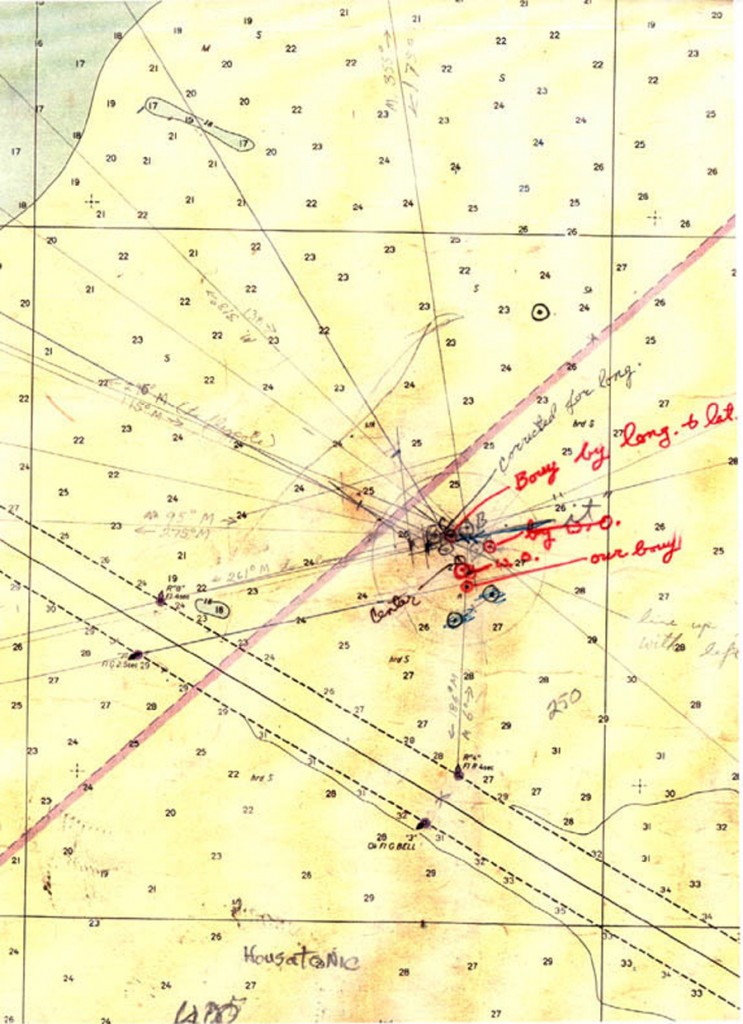
This map was published in my book Treasures of the Confederate Coast and is marked with the word “it” in quotes and shows an arrow pointing to an “X.” The center of the “X” is the Hunley’s correct location. It came out before Cussler supposedly discovered it, and any properly equipped, competent person could have used this map to go to the wreck.
So how could we both have discovered it? Since I hadn’t subsequently lost the Hunley’s location, I say we couldn’t.
Cussler’s discovery claims were made a quarter of a century after I found and reported it. The main character in his books is a marine archaeologist and I believe his claims were meant to add to his own credibility and thereby help him sell more books. In other words, I believe Cussler was trying to blend fact and fiction.
Perhaps Cussler’s claims are best explained by his peculiar definition of discovery. During a sworn deposition in a lawsuit relating to who discovered the Hunley, Cussler was asked what constituted a discovery. Cussler answered something to the effect that if he went out into the hall and saw a water-fountain he would have discovered it, and that everyone else who came along afterwards would also discover it. Cussler appears to believe that thousands of people could make sequential discoveries of the same thing, even if it was never lost. His definition is a stretch by any means and does not fit with my definition of discovery and I doubt that it does with that of most rational people.
History books say that undersea explorer Mel Fisher discovered the wreck of the Atocha. They correctly give Fisher (and his dive/boat crew) that credit because its location had been lost and Fisher was head of the effort that finally located it. Not one book gives the same credit to any one of the hundreds, if not thousands, of divers, archaeologists, photographers and tourists who have gone to the wreck site since it was found. To credit any of those with its actual discovery would be absurd.
I found the Hunley in 1970 while diving from the commercial fishing vessel Miss Inah and immediately reported my discovery to the proper authorities. The owner and captain of the Miss Inah was Captain Joe Porcelli of Charleston, South Carolina. Porcelli’s then brother-in-law, Troy Clanton III, was also aboard the boat. I describe what I did as a true “discovery” because the Hunley had been lost without a trace in 1864 and, although many people had searched for it, it had never been found until I actually saw and touched the partially exposed wreck in 1970. Enough of it was exposed that I had absolutely no doubt that I had found the Hunley. In fact, when I realized what it was, I went racing towards the surface literally screaming that I had “found the Hunley.” I had no camera with me, nor did I even own one at that time, which could have taken a picture in the poor visibility that blanketed the site. From the relative lack of recent growth on the exposed portions of the hull, the wreck had clearly just been exposed by shifting sands. My being there that particular day was a lucky break,
I say lucky break because that day had been planned solely for fishing not diving. Our day was to be spent trapping black sea bass. the traps were about 18-inch high cubes made of chicken wire weighted with rebar. They were much like the traps normally used to catch Atlantic blue crabs.
I had been searching for the Hunley but had not found it in the expected return corridor between the wreck of the Housatonic and Sullivan’s Island. I had taken a break from my search and no diving had been planned. The Miss Inah wasn’t my boat. I was merely a guest and I didn’t have any of my dive gear with me. I borrowed Porcelli’s gear to make the dive and I came close to not diving at all.
I made the dive for several reasons. While anchored and pulling in a fish trap, the trap hung up on something. Yet nothing should have been there. I knew the entire seafloor for miles around that area was a plain sand desert with no natural rocks or coral reefs. There wasn’t even eel-grass or seaweed growing on the bottom. The bottom should have just been shifting sand ripples with nothing for the trap to to get caught upon. I immediately started speculating that we had snagged a wreck. I convinced Porcelli and Clanton to stop trying to pull it loose. I asked Porcelli where we were. He got out a chart and placed his finger on a spot in 27 feet of water off Sullivan’s Island (using the fathometer and allowing for the vessel’s draft and the stage of the tide, I figured the actual low water depth at 29 feet, which may explain why part of the wreck was exposed).
From my archival research, I now recognized that we were in the general location of the wreck of the Housatonic and I suspected that we had snagged whatever was left of her. I had never searched at or immediately around the well-recorded historic location for the Housatonic. I hadn’t searched there because I didn’t think there would be anything there to discover. According to official records, the Navy had searched for the Hunley for 500 yards around the Housatonic. So I had seen no reason to look for the Hunley in that area. And, postwar salvagers had scrapped the Housatonic, so I hadn’t expected much to be left of it.
Porcelli had a set of dive gear aboard that he loaned me. However, his mask fit me poorly and I couldn’t even get into his wetsuit or fins. It was late autumn and diving in the bone chilling cold, limited visibility water would be extremely dangerous. I knew that it could easily cost me my life. But, I have an inquisitive streak and I wanted to know what we had snagged. Was it part of the Housatonic? Or, was it another wreck that my research had missed? Stripped down to my underwear and wearing Porcelli’s set of twin air-tanks and a double-hose regulator, I dropped over the side and down into the numbing water. I followed the traps’ line down to the bottom. The fish trap was resting at an angle on what first appeared to be a marl or limestone ledge partially uncovered in the sand. Bait was spilling from the trap. I wondered if the bait might attract sharks. Visibility was too poor to see if any were already nearby. I stared at the “ledge” puzzled, as I knew that the sand was far too deep for the marl or limestone bedrock to be exposed. Any bedrock should have been at least twenty feet below the sand.
I looked at the “ledge” closer, examining it carefully. I suddenly realized what it was. It wasn’t a natural ledge at all. It was heavily encrusted iron. Fortunately, I already had an enormous amount of experience diving Civil War wrecks in almost zero visibility. I could now pick out a distinct curvature and other features, that had first looked natural. It was all of that prior experience that suddenly came together and allowed me to recognize what I was seeing. I now knew exactly what it was. Ignoring all safety rules, I went racing to the surface, literally screaming through my regulator: “I’ve found the Hunley, I’ve found the Hunley.”
The boat had neither radar nor loran and GPS had not yet been invented. We were a little over three and a half miles from shore in the open-ocean and about 1,200 yards north of the shipping channel. Fortunately, I had studied deduced (d’ed) reckoning. I had also learned to use houses, trees and lighthouses on shore as ranges. By today’s standards, it’s a primitive form of navigation, but it can work with amazing accuracy. Even before I dried off and dressed in my dry clothes, I took magnetic bearings to a channel buoy and other obvious landmarks. I noted the ranges so I could later return to the site and properly map its location. When we pulled anchor and headed home, I noted our speed, heading and time that it took us to get to the bouy.
Using my ranges and bearings, commercial diver Jim Batey, accompanied by the late Ron Reneau, dove on the wreck the same week and confirmed that what I had found was indeed the Hunley. Batey later gave a sworn statement about his dive.
The shifting sands quickly recovered the wreck, but I had taken accurate bearings to channel markers and lighthouses so I knew its position.
In early 1971, the late Mike Douglas and David McGeehee, both then of Pensacola, Florida, went to the site with me prepared to photograph it. We quickly relocated the wreck with a McDowell proton magnetometer, but like all other times I went to the site, except for that first day, it was completely buried. McGeehee has since given a sworn statement about our work that day. The last that I heard, McGeehee was doing similar type magnetometer work for the U.S. Army Corps of Engineers.
In 1979 and early 1980, Captain Jack Parker helped me reconfirm the Hunley’s location using a Fisher Proton One magnetometer, and has likewise given sworn statements about our work.
In 1972, in an effort to get permission from the United State’s General Services Administration (GSA) to raise the wreck, I helped create the Sea Research Society (a non-profit educational research organization) and became its president. The Society wanted to raise the wreck and donate it to the State of South Carolina. I mention our wanting to donate it because it was valued at many millions of dollars and some people have thought I planned to sell it. That was never the case and, as explained in more detail below, I actually did donate my rights to it to the State in 1995. (Note: Today the Society has more than 15,000 members. To join Sea Research Society through Facebook go to http://www.facebook.com/groups/searesearchsociety/. For more on the Society go to http://www.searesearchsociety.org or http://www.searesearchsociety.com.)
Although considerable effort was made in attempting to secure permission to raise the wreck, and although the Society had the support of certain historians and underwater archaeologists with the National Park Service (NPS), GSA did not issue the final permit required to do the work, as there was simply no applicable rules and regulations in place that would have allowed GSA to do so. This was despite the fact that I, as president of the Society, had furnished the specific location of the Hunley to various government offices and we had received clearances from both the U.S. Navy and the U.S. Army Corps of Engineers to do the work.
Perhaps it should be noted that between November of 1970 and June of 1975, although in frequent contact with various government officials relative to my efforts to get permission to savage the wreck, I kept my discovery entirely secret from the media. The fact that I kept it secret and applied in conformity with government regulations, clearly shows that my claim was not some sort of misguided publicity stunt. I did not release anything to the media about my discovery until half a decade had passed and I realized that, without public interest and pressure, GSA would never issue the necessary permit.
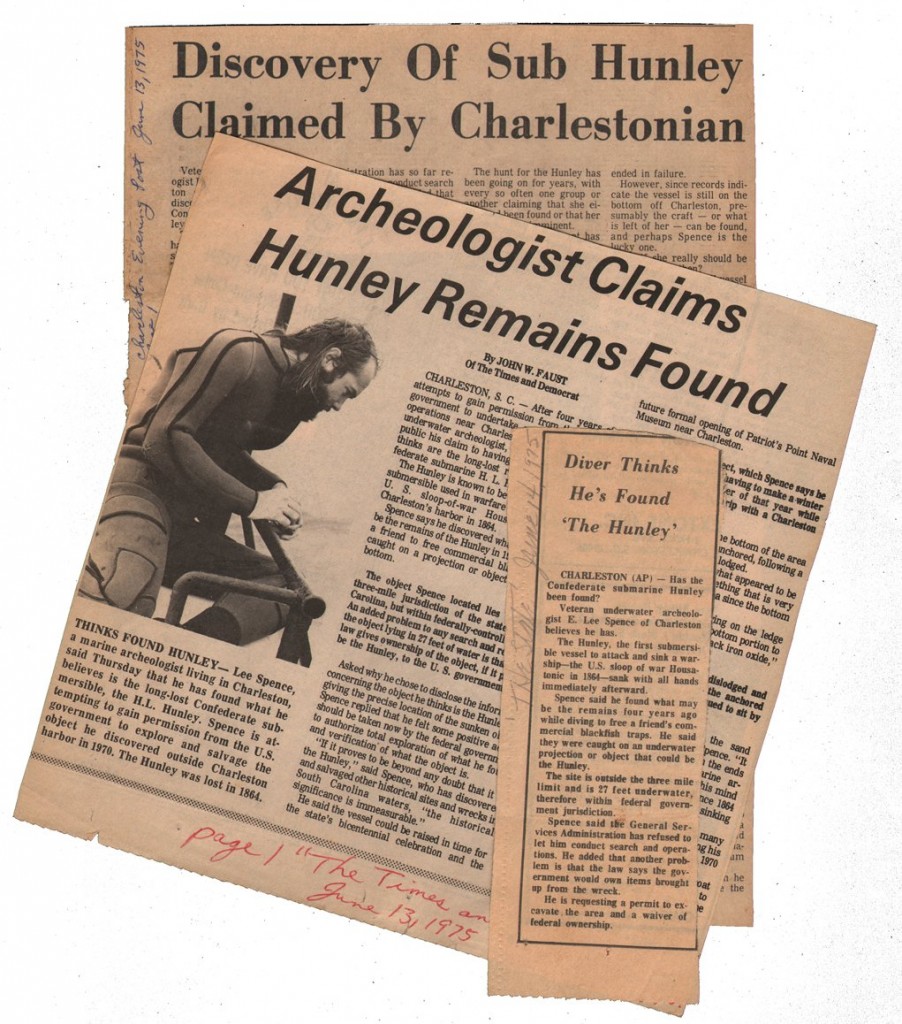
Miscellaneous newspaper articles from 1975 reporting on the announcement by Dr. E. Lee Spence of his 1970 discovery of the Hunley. Spence found the wreck in 1970 and immediately notified the State Archaeologist of his discovery, and for the next five years worked with numerous government agencies trying to secure permission to salvage it. Finally in 1975, after years of inaction by bureaucrats, he went public with the story trying to pressure them into acting. That five year wait proves beyond all reasonable doubt that Spence was not claiming discovery just to grab credit and headlines. On the other hand, Cussler announced “his” discovery of the Hunley within days of the NUMA dive team taking pictures of it.
In 1976, the Hunley was officially nominated by the National Park Service for placement on the National Register for Historic Places. The nomination referenced the Hunley’s discovery as reported by the Sea Research Society. The NPS reported the location as they interpreted it from my map that I had filed with them in 1974. In 1978, the Hunley was officially approved for inclusion on the National Register. A shipwreck site cannot be placed on the National Register unless its actual location is known. The placement of the Hunley on the National Register was only approved because the NPS was convinced that I had discovered it and that I had accurately mapped its location.
My case in federal district court against Cussler and NUMA (it was actually a countersuit as NUMA had filed first) was eventually dismissed. The judge was clearly sympathetic to me and my claims, but he ruled that the statute of limitations had passed before I filed. My attorneys fought to get my case re-instated, but had no success. Cussler’s attorneys dropped NUMA’s case against me only after it became clear that the judge was going to allow me to introduce evidence of my discovery of the Hunley as defense against NUMA’s claims that I had slandered NUMA and that I had falsely advertised that I was the discoverer of the Hunley. Even though a loss on my part could have cost me millions of dollars, I was willing to risk it and did not want NUMA’s case dropped. But there was no legal way to force Cussler to continue it. A win in court for either party would have settled the matter. I firmly believe I had the necessary evidence to win and that was exactly why I wanted a jury to hear the case. A win on my part would have discredited Cussler’s claims and would have effectively credited me with the discovery. My assumption is that Cussler and/or his attorneys thought it was not in Cussler’s best interest to have a jury see and hear my evidence and then decide the case. Cussler and/or his attorneys probably believed that NUMA would have lost in court. Most of the evidence that I planned to use is a matter of public record and has been for many years. You might want to look at it.
What some people do not know is that scientist Kevin Remmington at the University of South Carolina used GIS computer technology to compare the State’s official position for the Hunleywith my plotted my location for the Hunley, as shown on a map that I had furnished the state in 1974, and as marked by the “X” on my annotated map in my bookTreasures of the Confederate Coast (Narwhal Press, 1995) that had been published several months before divers funded by NUMA went to the site. My position for the Hunley had been calculated using a magnetic compass and a sextant, while the State’s was obtained with enhanced GPS satellite technology. My plots of my location for the Hunley varied slightly, but in both cases Remmington found my mapped locations to be approximately 52 meters from the State’s position. That is less than the length of either the salvage vessel or the barge used in raising the Hunley. If my two plots of my position for the Hunley and the State’s coordinates were marked on the standard chart of the area (NOAA chart “Charleston Harbor & Approaches”), all three positions would fall within a circle 21-thousandths of an inch in diameter. That is the approximate diameter of the small circle used to show a buoy’s position on NOAA charts, which by law must be accurate, and is well within the accuracy and tolerances used by NOAA in the plotting the position of shipwrecks on navigational charts. NOAA typically represents a wreck’s location by a symbol that is approximately a quarter of an inch in length. I hope you don’t believe that I should be held to a higher standard, or that I merely guessed the location (as suggested by Cussler). If I was that good of a guesser, I would be gambling in Las Vegas.
NUMA is a non-profit organization that was named for a fictional government agency in Clive Cussler’s novels. In 1995 a dive team,consisting in part of Ralph Wilbanks, dug up the wreck of the Hunley and photographed it. The dive team was part of an expedition that was partially funded by NUMA and/or Cussler. Shortly afterwards and on the basis of that work and funding, Clive Cussler announced that NUMA had discovered the wreck.
The press instantly credited Cussler with the discovery. However, the press was ignoring the facts. The dive team was officially part of the 1994/1995 Hunley Expedition, which was organized and directed by Dr. Mark Newell, not Clive Cussler. Newell is an underwater archaeologist, who was then with the South Carolina Institute of Archaeology & Anthropology (SCIAA). Newell, who had been researching the Hunley for many years, had come across documents and maps in SCIAA’s files relating to my 1970 discovery. He realized that SCIAA had never checked out my claims. Based on his research, my location wasn’t where he would have thought to look, so he initially thought I was wrong. But he still thought he should check out my site. If my site wasn’t the Hunley, he wanted to locate the sub himself.
Knowing that Cussler and NUMA had unsuccessfully searched for the Hunley in 1980 and 1981, Newell approached Cussler for some of the funding he needed for an expedition. Cussler agreed. That funding was important and necessary, but the fact remains it was Newell, not Cussler, who was the instigator, organizer and director of the expedition. Newell’s expedition was officially a SCIAA expedition, but because it was partially funded by NUMA, it is sometimes referred to as a joint SCIAA/NUMA expedition. If it had truly been a NUMA expedition, as some would have you believe, it would have been required by law to have a permit to do the initial excavation, which it absolutely did not have.
Newell has a personal stake in seeing the 1994/1995 Hunley Expedition credited with the discovery. As both the originator and official director of the expedition, Newell could claim credit, but only if his expedition discovered it. Since they didn’t discover it Newell doesn’t claim credit for the discovery. Nor does Newell credit Cussler and/or NUMA with the actual discovery. Instead, Newell credits me. Newell has given sworn testimony on at least three separate occasions that he used my maps to both plan and direct the expedition. He says he considers me to have been the original finder of the Hunley and that what his 1994/1995 expedition effectively did was to verify that the object that I had found in 1970 found was indeed theHunley.
During the court case about the Hunley, I furnished documents showing that diver Ralph Wilbanks had ordered copies of my book (with my Hunley location map in it) for the dive store that he worked with and that I had delivered the books at least a month prior to Wilbanks’ going out to the Hunley site. In fact, because I considered him a friend, I gave Wilbanks a copy that I had autographed and discussed my mapped location of the Hunley with him even though I knew Wilbanks was an associate of Cussler and was part of Newell’s then ongoing Hunleyexpedition. I even encouraged Wilbanks (who used to work for SCIAA) to explain my map to the other expedition members and get them to go to my site and check it out. My site had been ignored by SCIAA for too long and I wanted the State’s official verification of my discovery, but I certainly didn’t want Wilbanks, SCIAA or anyone else claiming that they had discovered it. Wilbanks is an intelligent and very capable person. I have great respect for his abilities. There would have been nothing illegal or unethical in Wilbanks using my map to go to the Hunley, just as there was nothing wrong with Dr. Newell’s using it to direct the expedition. To think that someone as competent as Wilbanks would not have carefully read my chapter on my discovery of the Hunley or would not have thoroughly examined my map (especially after our discussion), doesn’t seem reasonable or plausible to me. I give Wilbanks more credit than that. But, Wilbanks claims he didn’t use it. I wonder if that is because admitting to using my map would be tacit admission that I discovered the Hunley and that he played no role in the actual discovery but only in its verification. Do you think that might be the case? Wilbanks is now on NUMA’s Board of Directors. Do you think he would have been named to that Board and allowed to share the limelight with Cussler if he had told people that he used my map?
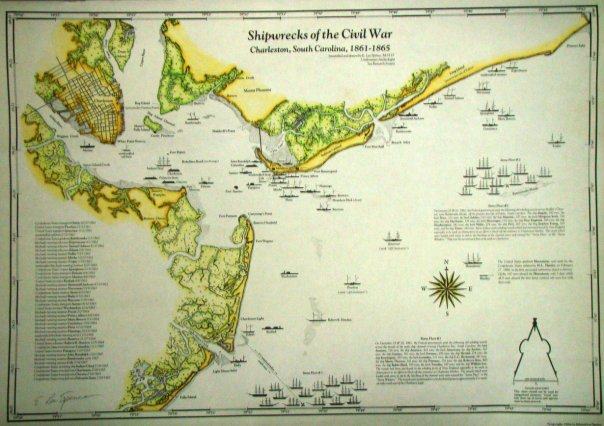
This decorative map, “Civil War Shipwrecks of Charleston South Carolina 1861-1865,” is one that I drew and published in 1984. It correctly shows the relative position of the Hunley as off shore and east of the wreck of the Housatonic. That is important because its offshore location was unexpected and went against the historical record. In other words it was not a location that would have been deduced or guessed from historical records. Like other historians, I knew from research that an offshore location was unlikely and I certainly would not have correctly shown it as offshore and east of the Housatonic had I not already found both wrecks. Although not meant for navigational purposes, this map is additional proof that I found the Hunley long before the SCIAA/NUMA expedition dug it up in 1995. © Edward L. Spence
Although, because of Clive Cussler claims and the damage that he has done to my reputation and career, I neither respect nor like him as a person, I still believe he played a very important role with the Hunley (as did Wilbanks, Dr. Newell and many others). Had it not been for Cussler’s fame as a best selling novelist and Cussler’s ability to garner publicity (he used to work for an advertising/public relations agency), I suspect the Hunley would still be sitting buried in the sand off Sullivan’s Island. For that and for helping to fund the expedition that verified the Hunley’s identity, I give Cussler credit. However, I don’t think Cussler or Wilbanks, or NUMA, or SCIAA deserve any credit whatsoever for the actual discovery as they weren’t involved in it in 1970, I was. The only people who were with me at the time of the actual discovery were Joe Porcelli and Troy Clanton.
Many people are not aware of it, but, in 1980, I filed an admiralty suit (and thus my location) with the federal district court claiming ownership of the Hunley under both the law of salvage and the law of finds. Although both the State and the federal government had been served with proper notice and public notice was placed in the legal section of the newspaper, no one stepped forth to dispute my claim to have discovered the wreck. Nor did anyone dispute my ownership of the wreck and its contents. In fact, the U.S. Attorney claimed that the wreck was outside of the jurisdiction of the U.S. Marshals Service, which would not have been the case if the United States had a legal claim of ownership to the wreck. With no counterclaimants, I became the sole owner of the Hunley (at least that was the opinion of my attorneys in 1980/81 and the opinion of South Carolina Attorney General Charles M. Condon and others in the Attorney General’s office, who looked into the matter on behalf of the Hunley Commission in 1995).
On September 14, 1995, at the recommendation of the South Carolina Attorney General, who’s office had researched both my discovery and my ownership claims, Senator Glenn F. McConnell, as chairman of the Hunley Commission, officially asked me to donate my rights to the Hunley to the State. I immediately agreed. Minutes later, South Carolina Attorney General Charles M. Condon and I signed a document transferring my rights to the Hunley to the State.
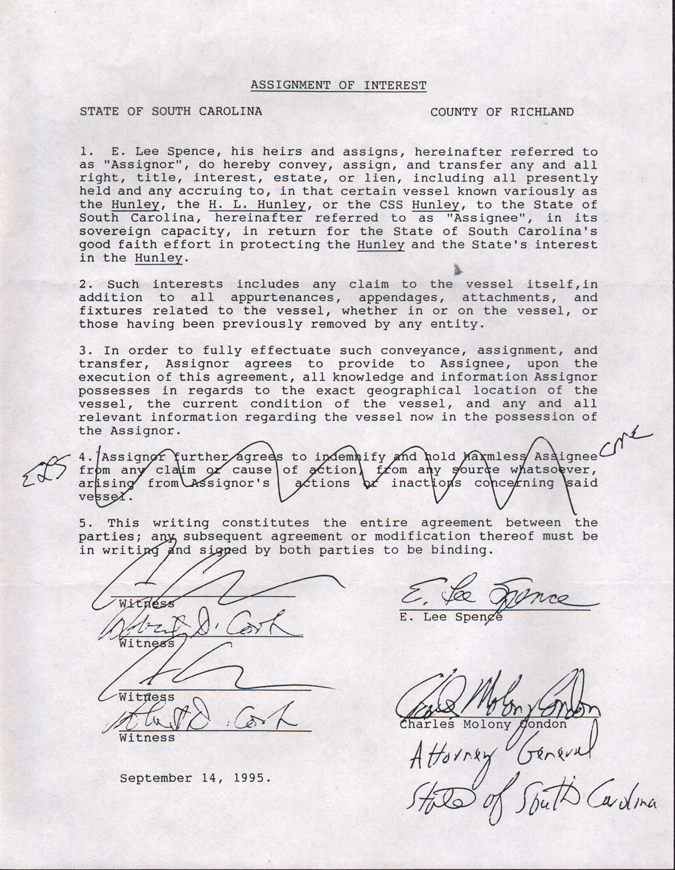
Here is the document that I signed when I donated my rights to the Hunley to the State at the official request of Senator McConnell, chairman of the Hunley Commission. Note that the document was signed by the Charles Malony Condon, Attorney General of South Carolina.
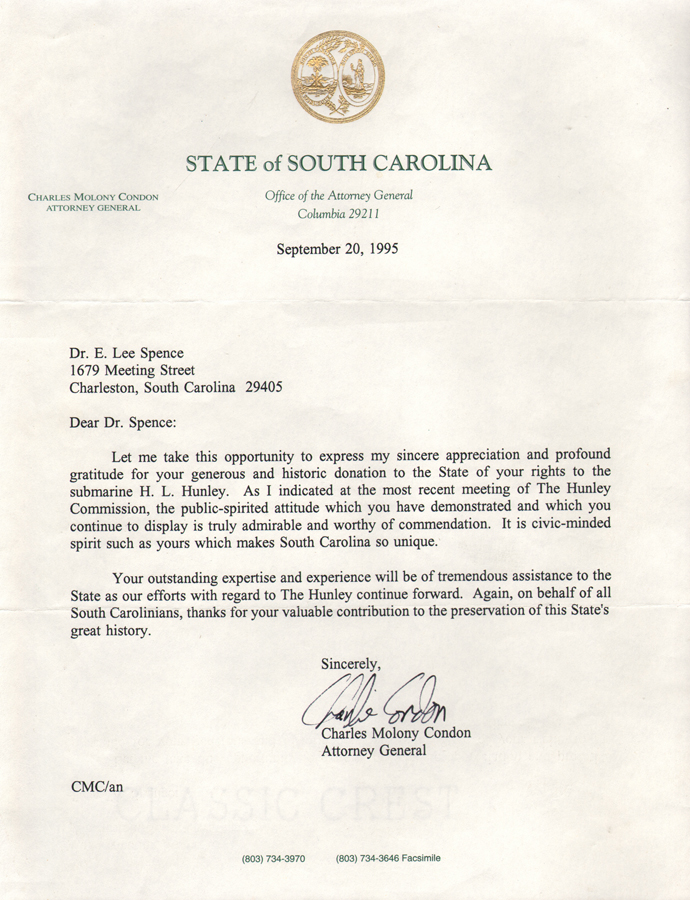
September 20, 1995, letter from South Carolina Attorney General Charles M. Condon, thanking me for my “generous and historic donation” of my rights to the Hunley to the State.
Perhaps it should be noted that early in the lawsuit between me and Cussler/NUMA, Cussler’s attorneys made a motion trying to say that when I donated my rights to the State that I had given up all rights, including the right to be credited with the discovery. It was an absurd argument, fortunately the Honorable Sol Blatt (Federal District Court Judge) didn’t go for it. Judge Blatt ruled that, although I had donated my rights to the wreck to the State, I had not given up my right to claim credit for the discovery the Hunley.
Cussler muddled matters by misleading the media and the public about the Hunley’s location for over a year. Cussler had falsely claimed that it was in about 18 feet of water, which would have placed it well over a mile from my location, which was in about 27 feet of water several hundred yards offshore of the wreck of its victim, the USS Housatonic.
There was no way we could both be telling the truth. Cussler had pictures and I didn’t so the press initially believed him.
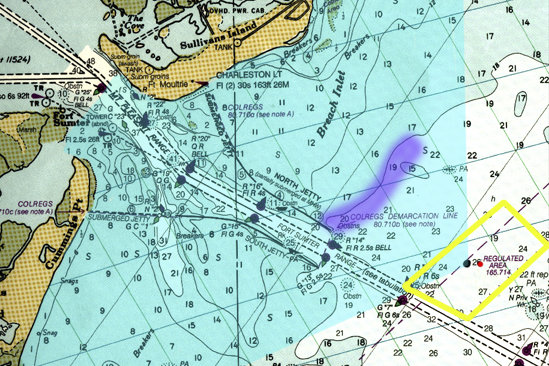
The purple area on this map indicates the only waters 18′ deep located between the wreck of the Housatonic and Sullivan’s Island. This is where Cussler claimed the SCIAA/NUMA expedition discovered the Hunley. That was not true. The Hunley was later determined by SCIAA & NPS to be in 27′ of water at the spot marked by the red dot in the yellow rectangle. My location, as I had plotted it on two different maps in the 1970s, falls under that red dot. In other words, I told the truth and I correctly mapped and reported the location, while Cussler initially did not.
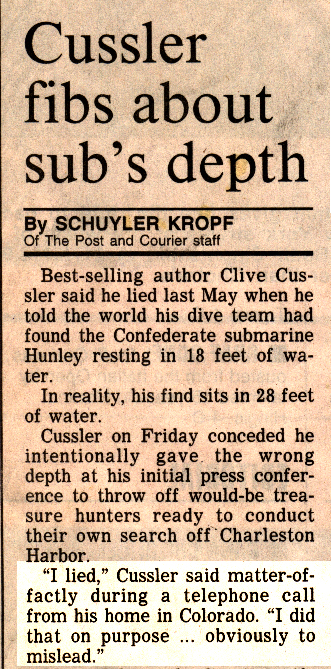
By having photos, but lying about the location, Clive Cussler managed to convince the press that I hadn’t found the Hunley. By the time Cussler admitted the truth, the damage was already done.
When the truth became clear and the wreck was verified to be in 27-29 feet of water a few hundred yards offshore of the Housatonic, Cussler finally admitted to a reporter that he had “lied” about the location.
At his 1995 press conference, Cussler told the press that his people had discovered the Hunley in 18 feet of water well in shore of the wreck of the Housatonic. That was a blatant lie, but why had he done? Although he says it was to protect the wreck, he could have protected it by simply not holding the press conference. There was no obligation to immediately blare to the world that the SCIAA/NUMA expedition had dug it up and taken pictures of it. Remember, to protect the Hunley, I had not told the press about its discovery during the first five years of my negotiating with the government for permission to raise it. I am convinced that Cussler held the press conference because he wanted the publicity. He wanted credit that he didn’t deserve. He lied solely because the alleged differences in depths made it look like it wasn’t found anywhere near where I had repeatedly said it was, which was in 27′-29′ of water offshore and east of the wreck of the Housatonic. I believe Cussler lied, not to protect the wreck, but to intentionally mislead people into thinking I could not have found it. Had Cussler told the truth about the Hunley’s location, everyone would have immediately known that I had been telling the truth about my discovery and he wouldn’t have been credited. Unfortunately both for me and the true history of the Hunley, Cussler didn’t admit that he had “lied” until almost exactly a year had passed and his lies had been repeated by the media all over the world. By that time, the damage had been done. It is impossible to “un-toll” a bell. There will always be books and articles stating Cussler and NUMA discovered the Hunley. Its interesting to note that the reporter who caught him in the lie still failed to thereafter credit me with the discovery. I suspect that reporter, who had gained name recognition by a year of reports and stories on the Hunley, was afraid he would lose both access and credibility, if he suddenly stopped crediting Cussler and credited me.
The truth is, Cussler was not on the boat the day that the SCIAA/NUMA expedition first dug up the Hunley, nor was Cussler the director of the expedition (remember Dr. Newell was the director), nor did Cussler ever dive on the wreck site a single time. The first time Cussler ever actually saw or touched the wreck of the Hunley was the day that the Hunley was raised in the year 2000. He saw it along with thousands of other observers and many millions more watching on TV around the world. That was approximately thirty years after I discovered it. In my opinion, what Cussler did was to popularize the Hunley and to bring attention to it (and also muddy the truth), not to discover it.
I discovered the Hunley by researching it, actively searching for it, seizing a unique opportunity, diving on it, seeing a portion of it, physically touching it, and recognizing it when I found it. I also properly mapped its location and informed the appropriate government authorities in a timely manner. Although I admit that I was quite fortunate in coming across its location the way I did, I would not have dived on it nor recognized it for what it was, had I not done already done extensive research on it’s construction and had I not already spent countless hours diving on other Civil War era wrecks in the same general area. I also donated my interests in the wreck to the State so everyone, not just me, could benefit from my discovery.
I sincerely believe that there were many wonderful and competent people who participated in the raising of the Hunley, its conservation, preservation and display and in the burial of her crew. I also believe that many of those fine people were intentionally mislead about the facts by a small but influential group of people who had personal, financial and/or political motives.
Starting as early as 1974 various newspaper accounts and minor magazine articles had credited me with finding the Hunley, but the first major magazine article to credit me with the discovery of the Hunley didn’t appear until 2007. It was a cover story in U.S. News & World Report (published July 2-8, 2007). That article was thoroughly researched, which is important because it credited me by name with the discovery saying I found it in 1970. The writers/editors of the article did not even bother mentioning the widely published claims that Cussler and NUMA had discovered it. They obviously dismissed them thinking they were of little no consequence. Although I appreciated the credit, I think Cussler should have been mentioned, because I think he should have been publicly exposed as a wannabe, who lied to get credit he didn’t deserve.
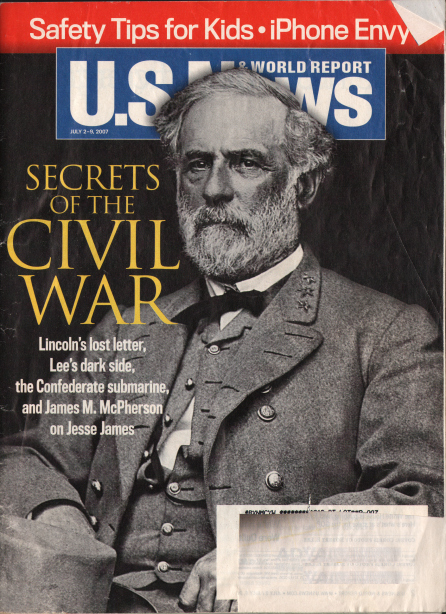
The July 2-9, 2007 issue of “U.S. & World Report” credited E. Lee Sppence as the first person to find the Hunley and gave the year as 1970, which was 25 years before Cussler.
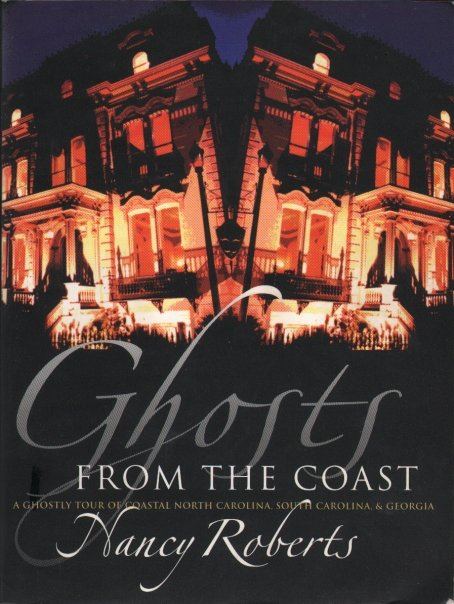
This book, “Ghosts from the Coast” by award winning author Nancy Roberts, credits Dr. E. Lee Spence with the discovery of the Hunley in 1970.
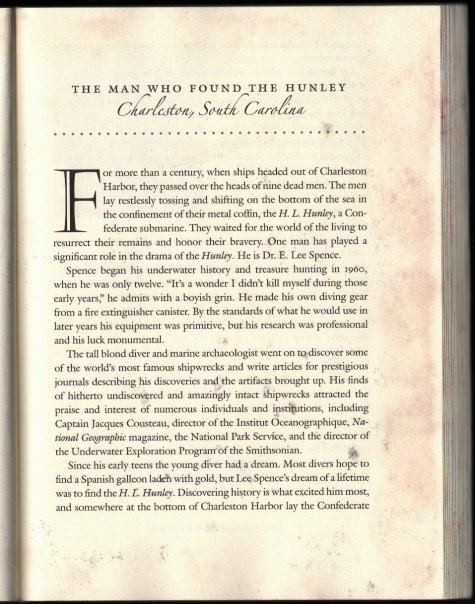
First page of the chapter “The Man Who Found the Hunley” in Nancy Roberts book “Ghosts from the Coast.” It credits Dr. Spence with discovering the Hunley in 1970.
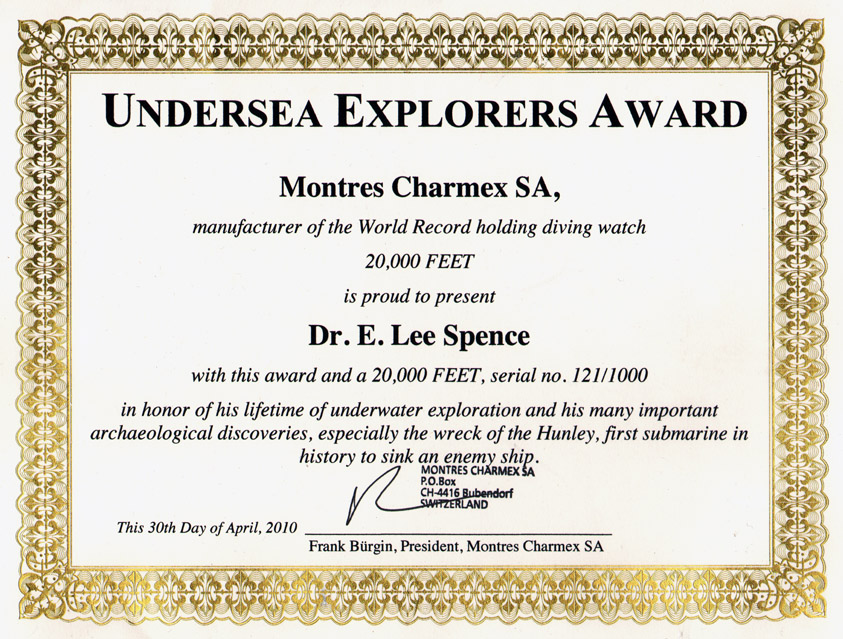
On April 30, 2010, Montres Charmex SA (of Switzerland) presented me with their “Undersea Explorers Award” and a $4,000, limited edition, World Record setting, 20,000 feet CX Swiss Military Watch™. The award read in part “in honor of his lifetime of underwater exploration and his many important archaeological discoveries, especially the wreck of the Hunley, first submarine in history to sink an enemy ship.”
In 2011, John Christopher Fine, who is both an accredited journalist and an admiralty attorney (as well as an award-winning diver and expert on shipwrecks), wrote a series of magazine articles and newspaper features about my work, in each of which he credited me with the discovery of the Hunley. His newspaper features on me appeared internationally (even in Korea) and a large article that he did on the Hunley, crediting me with its discovery, was published in History magazine.
Also in 2011 a Russian author contacted me to let me know he would be crediting me with the discovery of the Hunley in a book on submarines that was to be published in Russia in 2012.
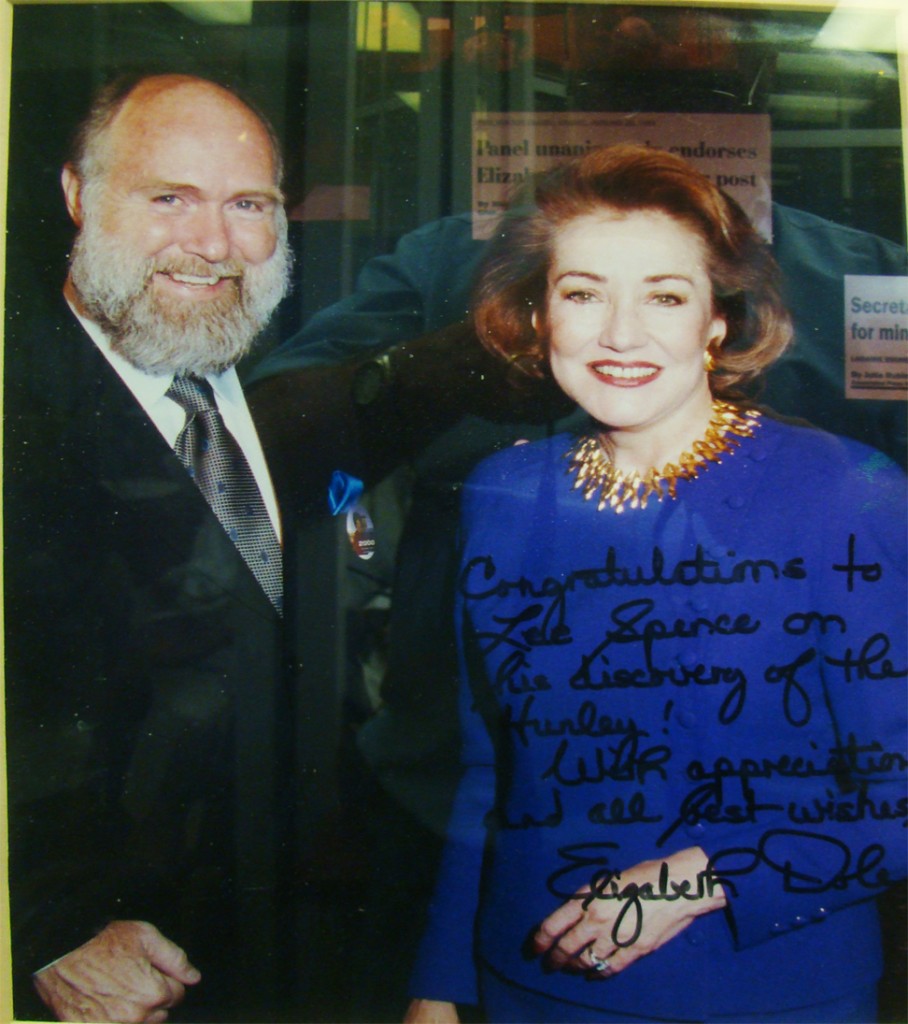
Dr. E. Lee Spence with Elizabeth Dole during her bid for the Republican presidential nomination. She has inscribed the photo “Congratulations to Lee Spence on his discovery of the Hunley!”
© 2010 by Edward Lee Spence. To quote more than a paragraph of this article you must first obtain written permission from Dr. E. Lee Spence. Contact him at [email protected]
For more on Cussler’s other discoveries, please see: A Comment by Dr. E. Lee Spence on Dr. Clive E. Cussler and his Alleged Discoveries
To learn more about Dr. E. Lee Spence look him up in Wikipedia or check out his profile on LinkedIn and/or Facebook.
X-Ray Magazine’s article credits Spence with discovery of the Hunley
Here is a direct link (http://shipwrecks.com/wp-content/uploads/2015/10/X-Ray-Magazine-article-on-Hunley-by-Chamberlain.pdf) to a PDF file of an article on the Confederate submarine Hunley, which was published in the November 2015 issue of X-Ray Magazine. Although that magazine is in English, its published in Denmark and is distributed internationally.
The Hunley was the first submarine in history to sink an enemy ship and the wreck has been described by government officials as the most important underwater archaeological discovery of the twentieth century.
The article was written by anthropologist/archaeologist Brian Chamberlain, who has been studying the Hunley for several years for the purpose of ultimately writing the definitive book on it. Chamberlain credits me with finding the wreck in 1970, and credits the 1995 expedition by the South Carolina Institute of Archaeology & Anthropology (SCIAA), which was funded in part by Clive Cussler, as having taken the first pictures of the wreck. Chamberlain’s finding that I was the discoverer matches the conclusions of the 1995 Expeditions official director, SCIAA underwater Archaeologist Dr. Mark Newell.
Dr. Spence has always believed the South Carolina Hunley Commission’s crediting of Cussler with the discovery of the Hunley was politically motivated. He reminds people that Cussler was officially credited with the discovery only after Cussler publicly threatened to donate $100,000 to the political opponent of Senator Glenn McConnell, who was then the chairman of the Hunley Commission. McConnell was the same person who, after Dr. Spence’s maps and other evidence had been thoroughly vetted by the S.C. Attorney General’s office, had asked Spence just days before Cussler’s threat was published to donate Spence’s discovery rights to the wreck to the State, which Spence did without hesitation, even though the wreck was said to be worth many millions of dollars. In Spence’s opinion, crediting Cussler makes no real sense in that Cussler wasn’t even the head of the 1994/95 Hunley Expedition. That expedition was initiated and directed by Dr. Mark Newell of the South Carolina Institute of Archaeology & Anthropology (SCIAA). Dr. Newell has publicly acknowledged using maps that Spence prepared showing where Spence had found the Hunley, which I had filed with SCIAA years earlier. Dr. Newell has previously stated that he had not initially believed it would be at Spence’s location, but, he had felt that it necessary to check out Spence’s mapped location anyway. And, since it ultimately proved to be at Spence mapped location, which was not where anyone would have expected to find it based solely on the historical evidence, Dr. Newell believes Dr. Spence found it in 1970, just as Spence has been saying all along.
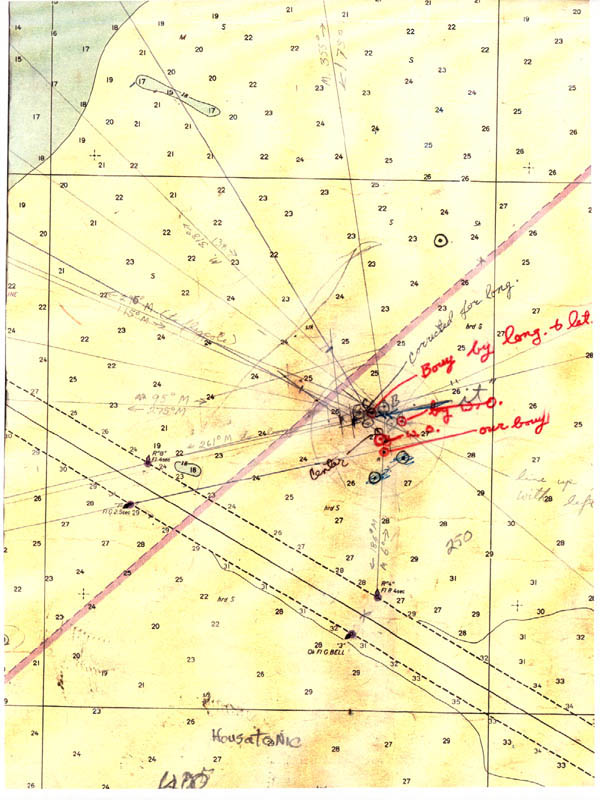
Map used in the article.
After the Hunley was raised and its official location was finally disclosed by SCIAA, Kevin Remington, a GIS expert with the University of South Carolina, used GIS rectification to scientifically compare the Hunley’s location as shown on the above chart, as well as an earlier one that Spence had prepared at the request of the Army Corps of Engineers, with the GPS coordinates for the Hunley as provided by SCIAA. According to Remington, the calculated difference between Spence’s mapped location for the Hunley, and SCIAA’s GPS coordinates for the Hunley, was less than 52 meters.
Moreover, Dr. Spence mapped his location for the Hunley without the aid of radar, loran, or GPS. Dr. Spence plotted it on the chart using magnetic bearings that Spence had taken from a rocking boat anchored over the wreck site to the buoys and lighthouses, as well as angles between them that Spence had subsequently determined using a sextant laid sideways to measure the angles. Considering the tools used, that was an amazing feat, especially when the plottable accuracy of the very best nautical chart of the area (NOAA chart 11523 “Charleston Harbor Entrance”) is only 1:20,000. In other words, a one millimeter error in plotting would result in a twenty meter error. So the center of Spence’s “X” was off on the chart by less than 2.6 millimeters. Even that minor “error” can be accounted for simply through the fact that the entire width of each lighthouse and each buoy (and thus their locations) had been reduced on the chart to single points (all of the same size), making it impossible for anyone (using the methods Spence used) to plot any more accurately than what Spence accomplished. Furthermore, 52 meters is less than length of the salvage barge used in raising the Hunley. In fact, Spence “X” is slightly more accurate than the government’s representation of other shipwreck locations, as NOAA (the government charting office) used a wreck symbol of approximately 3 millimeters in length elsewhere on the same chart to show another shipwreck.
……………………………………….
For more on the Hunley
• See also: The Marred History of the Hunley
• See also: X-Ray magazine’s article on the Hunley
• See also: U.S. News & World Report’s article
• See also: California Diver’s interview
Discussion
Add a Comment
-
Mystery deaths of HL Hunley submarine crew solved August 24, 2017
-
You Will Not Believe What Was Found In This Sunken Submarine – Finest Science June 17, 2017
-
Google May 16, 2017
-
A Curie/U 14: a Monarchia francia tengeralattjárója – Napi Történelmi Forrás December 23, 2016
-
Sea Research Society « Shipwrecks.com October 4, 2013
-
Hunley Discovery « Shipwrecks.com September 21, 2013
